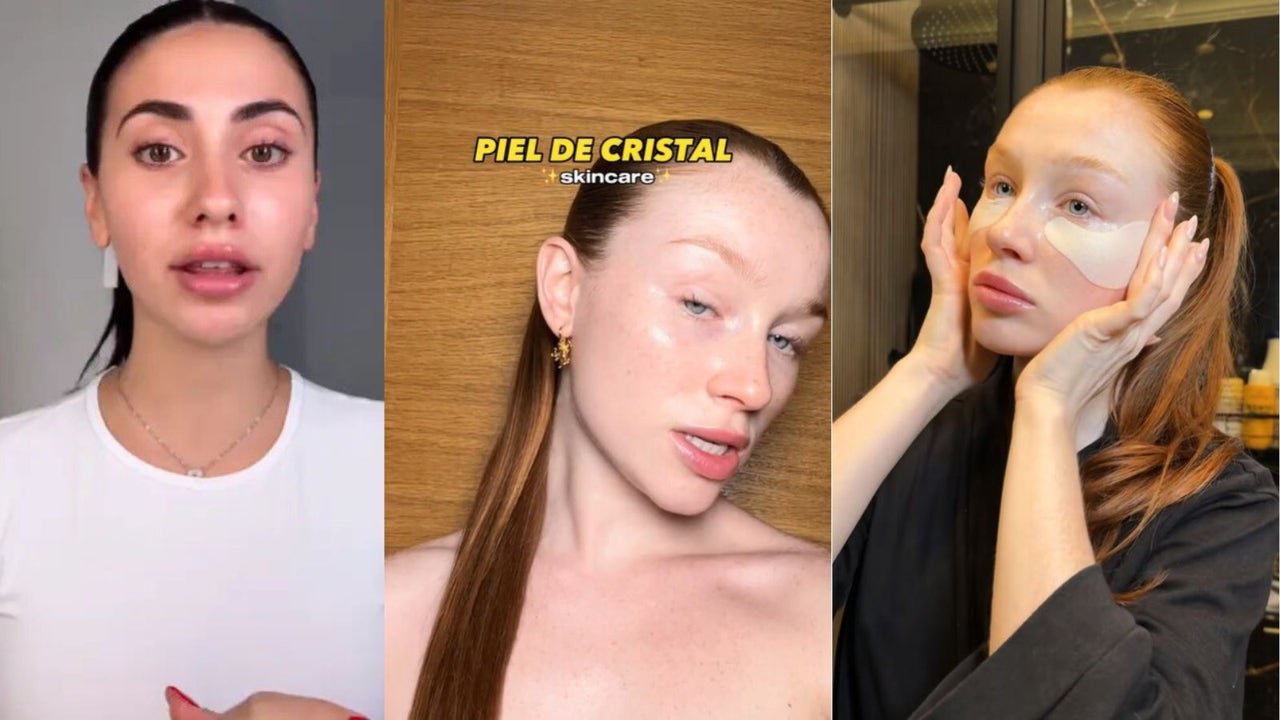
“They could mark the skin forever”
- Michael Johnson
- 0
- Posted on
“Prepare with me,” write the Influencers a Tiktok While they are recorded by applying ice, layers of creams, tonic and serums with peptides on their faces. But what looks like a routine of skincare Innocent – and even healthy – could be leaving a mark of life on your skin. This is revealed by a new study published in the magazine Pediatricsthe first to analyze in a scientific way the facial care routines that adolescents share in the popular social network.
Researchers at the Faculty of Medicine of Feinberg of the Northwestern University analyzed 100 of the most popular videos Published by girls between 7 and 18 years, discovering that these users apply an average of six different products on their faces, in some cases more than a dozen. Each routine has an average cost of $ 168 per month, although some exceed 500. and despite the deployment of cosmetics, only 26% of these treatments included sunscreen.
Not just that. The most watched videos contained an average of 11 potentially irritating active ingredients. This exposes to the creators of the contents and the most partly spectators, girls and adolescents, to suffer from cutaneous irritation, sun sensitivity and a skin allergy known as allergic contact dermatitis, according to the study. The risks are not minor. Previous tests have shown that developing such an allergy can limit the types of soaps, shampoos and cosmetics that people can apply the rest of their life.
“He high risk of irritation that we have detected in the routines of skincare Of the most popular influencers, it was both due to the simultaneous use of several active ingredients, such as hydroxyacids, as well as to the application of the same active ingredient again and again without knowing it, when that active ingredient was in three, four or five different products, ”explains Dr. Molly Hales, author of the study, dermatologist and postdoctoral scientific.
To carry out the study, The researchers created Tiktok profiles with a declared age of 13. Through the “for you” tab, they collected the most relevant videos until reaching 100 unique clips. They registered demographic data of the creators, the number and type of products used, their cost and composition, focusing on ingredients with allergenic potential according to the pediatric reference series in dermatological contact tests.
@dra.mariangela If you have an unwanted reaction when you start your skincare or a new facial routine, look to the end to know what to do in each case. #greenscreen#purge#purgaretinol#allergy#dermatitis#dermatology#skincare#Avade up#Medicinastética#Apiel#Cuidadofacial ((LINK:EXTERNO|||https://www.tiktok.com/music/vlog-chill-out-calm-daily-life-1370843-7179679214566639618?refer=embed|||♬ vlog, chill out, calm daily life(1370843) – SUNNY HOOD STUDIO))
For example, in a video included in the study, The creator of the content was applied 10 products in the face in six minutes. “While the products are applied, it begins to notice discomfort and burning, and in the last minutes it develops a visible skin reaction,” says Dr. Tara Lagu, the main author of the study. She is also an attached teacher of Medicine and Medical-Social Sciences in Northwestern and previously worked as a hospital in Northwestern Medicine.
What is sought is clearer and brighter skin
In addition to physical damage, researchers alert the underlying message of these contents. The analyzed videos “emphasized lighter and brighter skin,” says Lagu. «We saw that in some cases there was a Preferred racial language». These videos, they point out, not only have a dermatological impact, but have implications that go beyond skin care. «It is problematic to show girls who spend so much time and attention to their skin», Warns Hales. «We are putting the bar very high to these girls. The search for health has become a kind of virtue in our society, but the ideal of ‘health’ is also very wrapped in ideals of beauty, thinness and whiteness. The insidious ‘skin care’ is that it intends to be related to health ».
The analysis makes it clear that Tiktok algorithms favor continuous exposure To this type of content, which makes parents and pediatricians difficult to follow the trail of what adolescents consume online. For the authors of the study, these videos “do not contribute any benefit to the pediatric populations to which they are directed.”
The study was funded by the National Institute of Arthritis and Musculoskeletal and Skin of the National Health Institutes (NIH), and had the collaboration of other Northwestern researchers, including doctors Amy Paller, Walter Liszewski and Medicine student Sarah Rigali. With summer approaching – and the sun more present than ever – the authors insist on the essential: beyond viral fashions, The only product that should not be missing in any teenager is sunscreen. Everything else, better with medical advice.